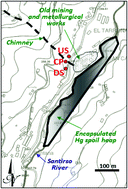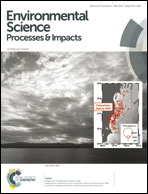Mercury availability by operationally defined fractionation in granulometric distributions of soils and mine wastes from an abandoned cinnabar mine
Abstract
Mercury contamination from historic cinnabar mines represents a potential risk to the environment. Asturias, in Northern Spain, was one of the largest metallurgic and mining producer areas of Hg in Europe during the 20th century until the end of activities in 1974. Mining operations have caused Hg release and dispersion throughout the area. In this study, soils collected from calcine piles and surrounding soils at an abandoned Hg mine and metallurgical plant in Mieres (Asturias, Spain) were distributed in different particle-size subsamples. Fractionation of Hg was performed by means of a Hg-specific sequential extraction procedure complemented with the selective determination of organic Hg fraction by a specific extraction method. Extremely high concentrations of total Hg were found in calcine piles. Concentrations and mobility of Hg decreased markedly with the distance in soils located 25 m both above and below the chimney of the metallurgical plant. The sequential extraction results indicated that Hg is primarily found as elemental Hg followed by sulfide Hg in the finest subsamples. However, this distribution is inverted in the coarser grain fractions where sulfide Hg prevails. Calcine piles exhibited exceptionally high values of mobile Hg (up to 5350 μg g−1 in the finest subsample). Accumulation of Hg in the elemental Hg fraction was observed at decreasing grain size which is indicative of deposition of Hg vapors from the metallurgical plant. Enrichment of sulfide Hg was found in the finest subsamples of soils sampled below the chimney (up to 99 μg g−1). Significant organic Hg contents were observed in the soil samples (up to 2.8 μg g−1), higher than those found in other abandoned Hg mining sites. A strong correlation was observed between organic Hg and Hg humic and fulvic complexes, as well as with the elemental Hg fraction. This indicates that both humic and fulvic material and elemental Hg must be the primary variables controlling Hg methylation in these soils.


 Please wait while we load your content...
Please wait while we load your content...